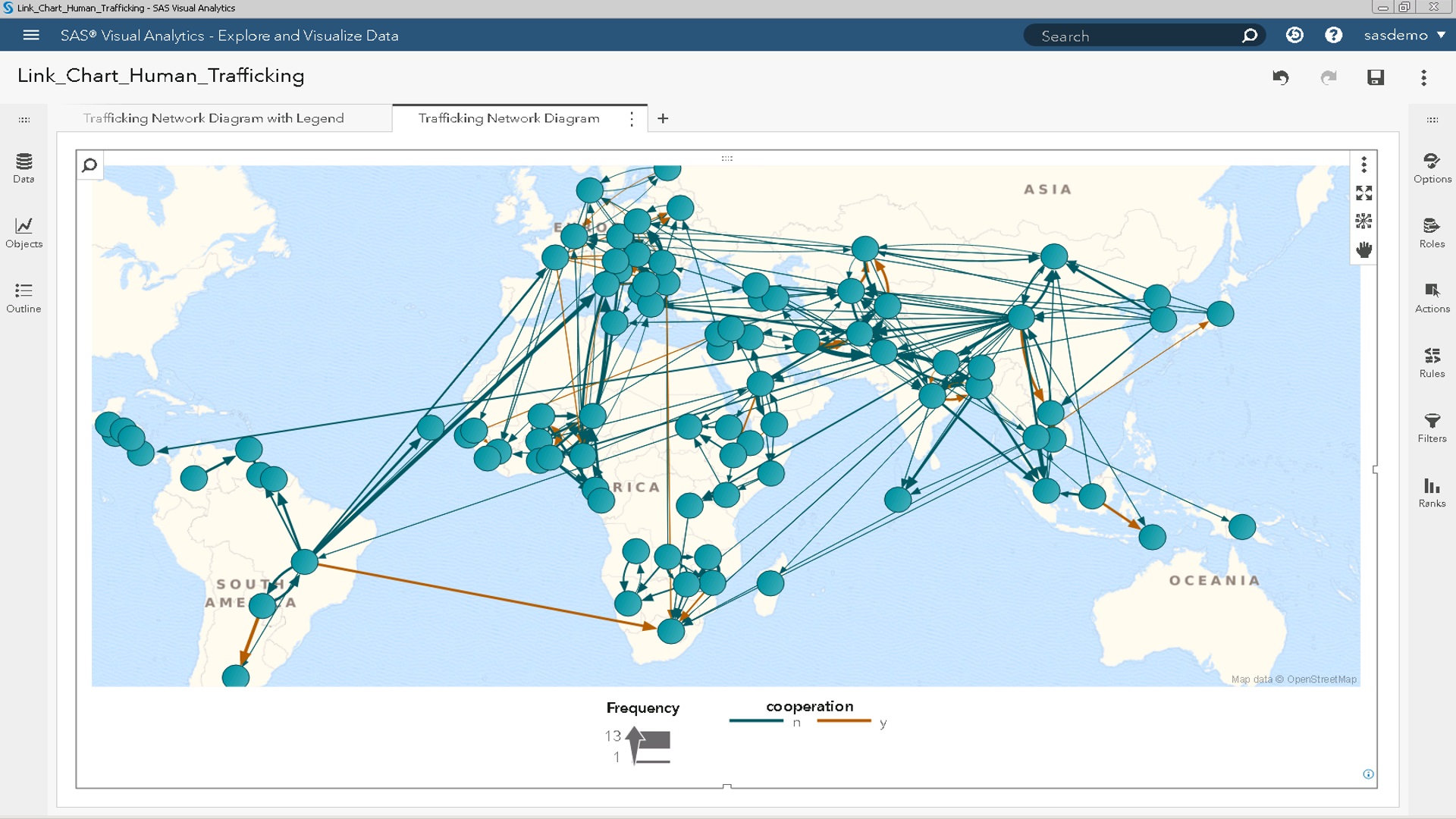My local middle school publishes a weekly paper. Very recently, I noted an article in that paper regarding an expose on human trafficking overseas, "World Slavery: The Terrors Our World Tries to Forget." The eloquent article in part highlighted how children have been exploited in the fishing industry in Ghana and identified organizations that assess and combat human trafficking. It was written by a young woman who has watched my children on a number of occasions. I was impressed by this, that someone so young would take the time to investigate and discuss this issue, focusing on something above the day-to-day that surrounds us in our suburban community.
Technology approach to fight human trafficking
I'm fortunate to be in a position where I'm able to investigate the issue of human trafficking, to identify helpful technology that can look at data and potential solutions. Recently, I've investigated the trafficking in persons (TIP) reports from the US Department of State to assess them for patterns in trafficking. Along with hefty assistance from my colleague at SAS, Adam Pilz, we developed an approach that could assess the purely textual reports for patterns.
We developed rules using SAS Visual Text Analytics that could:
- Extract patterns in trafficking between countries.
- Identify who was being trafficked (men, women, children).
- Identify what kinds of trafficking was taking place (labor, sex).
- Determine whether the countries in question are in the process of addressing the problem.
This created a structured data set that we could then geospatially analyze.
Our visualization and platform could then form the basis for assessing other types of data in conjunction with the TIP report data, such as armed conflict event data or social media, which could further assess connections between countries.
I've had the opportunity to present the work at SAS Global Forum 2018, as well as the LT-Summit in Brussels. We discussed additional factors that play into trafficking patterns and other sources of data, such as general migration patterns, which could further shine a light on the problem and assist government and nongovernment organizations with investing resources where they are needed most.

You can download my paper here:
SAS Global Forum Paper (April 2018): Using SAS® Text Analytics to Assess International Human Trafficking PatternsUsing hackathons to collect new ideas
Since writing this paper, I've had the honor to assist as a mentor at a recent hackathon hosted at George Mason University and brought together by Blue Compass, the creator of the Expedition Hacks series. This was a great opportunity to sit with a number of stakeholders in the human trafficking field, including industry, NGOs that focus on human trafficking and government agency representatives.
It's rare to have so many folks from different areas with different skills discussing a common problem in such a communal atmosphere. But most important here were the participants and their enthusiasm. Ideas ran rampant, including how to enable blockchain technologies and an app that could help those traveling overseas to assess potential employment opportunities for trafficking risk. There was even one that used natural language generation to mislead traffickers who were communicating with a chatbot while gathering information on the traffickers.
Learn more in a webinar
On June 14, I will be speaking at a webinar organized by Babson College that is part of a series: The Human Trafficking – Organized Crime Nexus: Intersections, Vulnerabilities, and Analysis for the Private Sector. This webinar will focus in particular on cybercrime, technology and human trafficking. I look forward to sharing some of what I've learned, including how text analytics, computer vision and a platform to support these AI-oriented technologies can assist.
I encourage you to register for the webinar, and learn more about the human trafficking problem. You can help shine a spotlight on human trafficking!
Register to the webinar on 14 June at 10AM -12PM EST: Cybercrime and Human Trafficking
6 Comments
Hi Tom, great post, great visualization and a noble cause!
Thank you Leonid! I appreciate the insight from your blog posts as well.
Hi Tom,
Great work! Thanks for investigating this important issue and highlighting the international connections. The lack of government cooperation is chilling.
I wonder if there is a way to add information about trafficking sources and destinations in the U.S. to your database.
Hi Jim - I think a follow-on project to assess information at a more granular level in localities would be fantastic. What I show here could formulate the basis for incorporating a variety of sources of drilldown data, including data from ACLED, social media, and as you suggest, other sources of US-based data which could indicate trafficking patterns nationally. There's a lot of room for growth here.
Great!! I m not sure if I can ask for the data analysis of the human trafficking report?
Hi Laila - Please reach out to me directly at tom.sabo@sas.com, we can talk about what you're looking for. I'm glad to help.